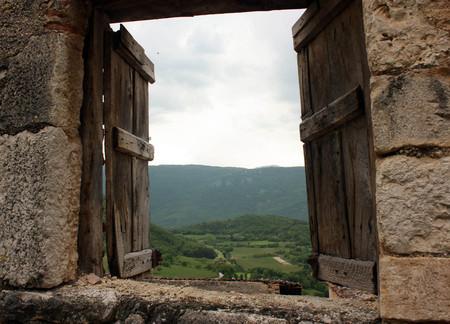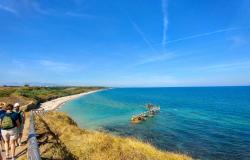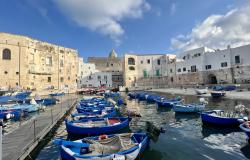My lifetime To-Do List is filled with dreams of great adventures, but none so personal as the wish to find my grandparents' villages in the remote hill country in central Italy. No glamorous big cities here, just hard-scrabble farmland surrounding small hilltop villages.
I had visited Italy often, and had a hard time imagining my grandparents in the sensory intensity of Venice, or in sleek modern Milan, or in the bustling crowds of Rome, but here in the timeless, quiet fields I knew I had found their core. Everything about their lives in the United States spoke of this place; the rustic farm in Adna, the fruit and vegetable cart in Seattle, their dedication to the church in Chehalis all mirrored village life in Italy.
First on our itinerary was Nonna’s. We followed her presumed path from Naples - her port of embarkation - into the hill country with the help of our GPS. In 1911, seven-year-old Giuseppina, her younger sister, and her parents would likely have made the trip by donkey or ox cart - only the wealthy had auto-mobiles, and they were certainly not wealthy.
Morrone del Sannio was once a village of 1100 but is now reduced to about 600 inhabitants as it endures a shared fate with many of these remote villages - the youth leave for education and jobs in the big cities.
Once in the village, we wandered the streets in search of the City Hall. I stopped to photograph an impossibly narrow alley wondering how anyone could live in such a confined space. We found Nana’s birth record and it included her address - 3 Vico Arnaldo. A gentleman from the Records Department beckoned for us to follow him as he led us to her door in a block of row houses - on the very same alley that had attracted my attention barely an hour earlier. Why was I so drawn to this particular alley before I knew it was hers? I wonder.
The house where she was born consisted of two rooms, one stacked over the other. A small window above and the door below were the only light and ventilation. Standing on her doorstep, I could reach across the alley and touch the neighbour’s door. It was an amazing moment standing in that tiny doorway. I understood then why she referred to me as the “Tall One”, even though at 5’3” I’m hardly considered tall. My head brushed the top of the door frame. The alley grew narrower as we followed it to the end and squeezed through an opening to a small courtyard where she likely played. I visited the church where my great grandparents were married and where my grandmother was baptised hoping for some record of those events, but the earthquake in L’Aquila a year earlier had closed the church.
 The devastating effects of the earthquake were more apparent in my grandfather’s village, Ripa in the Comune di Fagnano Alto. His small farming village of just over 400 before the quake was reduced to little more than a ghost town when we visited. Many of the streets were closed by collapsed buildings. Most houses were empty and tufts of grass sprouted between the cobbles of the streets. Of Papa’s six siblings only he and an older sister survived infancy, the eighth child and his mother dying as one.
The devastating effects of the earthquake were more apparent in my grandfather’s village, Ripa in the Comune di Fagnano Alto. His small farming village of just over 400 before the quake was reduced to little more than a ghost town when we visited. Many of the streets were closed by collapsed buildings. Most houses were empty and tufts of grass sprouted between the cobbles of the streets. Of Papa’s six siblings only he and an older sister survived infancy, the eighth child and his mother dying as one.
Without a mother, three-year-old Carlo was given over to the church to be raised by the nuns. At 17 he joined the army and served in Ethiopia in WWI earning enough money to buy passage to the US for himself and his cousin. At Ellis Island, immigrants had to prove that they had at least $20 in their pocket and could speak English. Papa had a $20 bill and his cousin spoke a few words of English. At the entry point they secretly traded their only $20 bill back and forth between them, his cousin prompted Papa with the only words of English he knew. The ruse worked and they were both admitted to a country that desperately needed the kind of labourers they represented.
Other than the earthquake destruction, it didn’t appear his village had changed much since he walked the streets as a young man returning from war to the bleak future of post-war Italy. In both locations, locals peered from behind curtains at the Stranieri, strangers, in their town. After looking at the photos from my trip, my father said it best, “The pictures sure help to explain their lives over here”.





